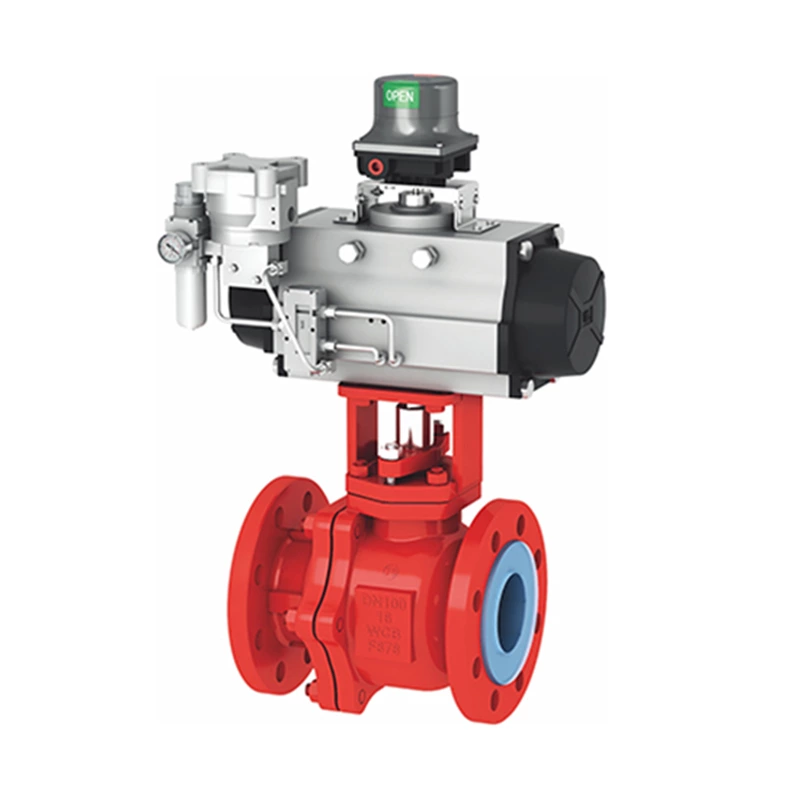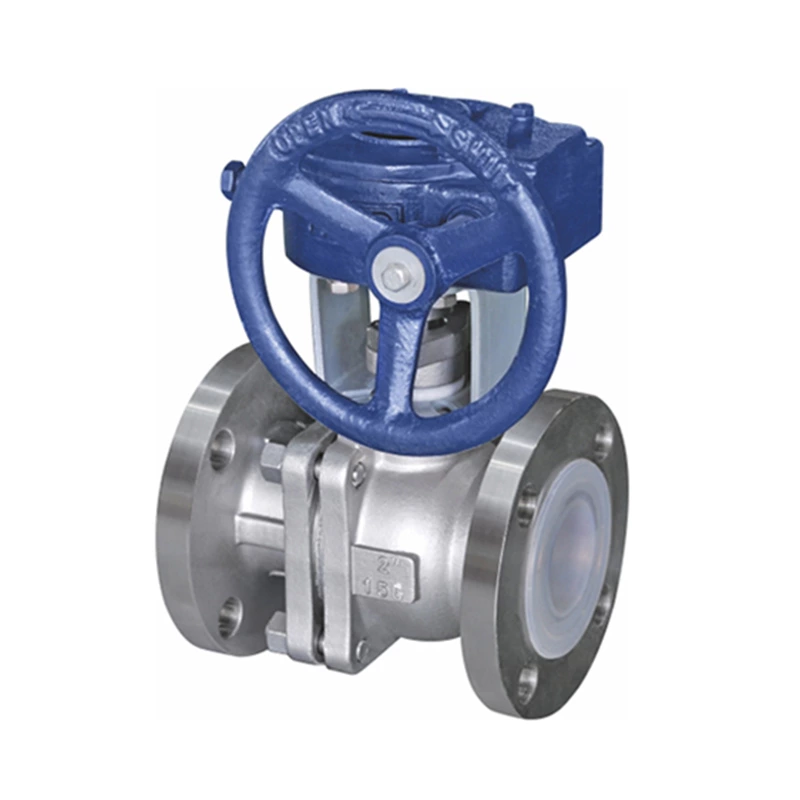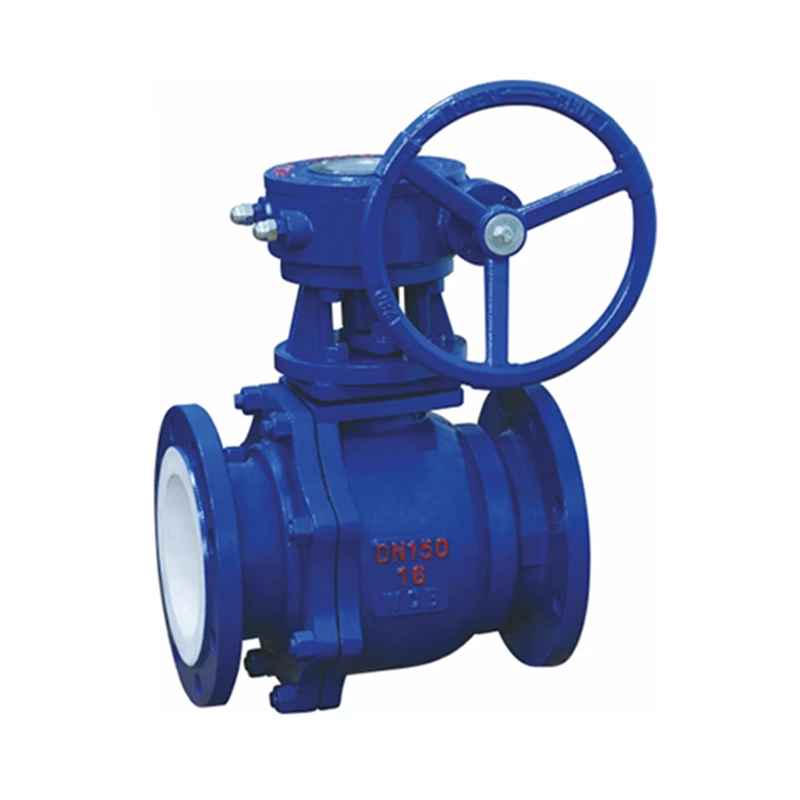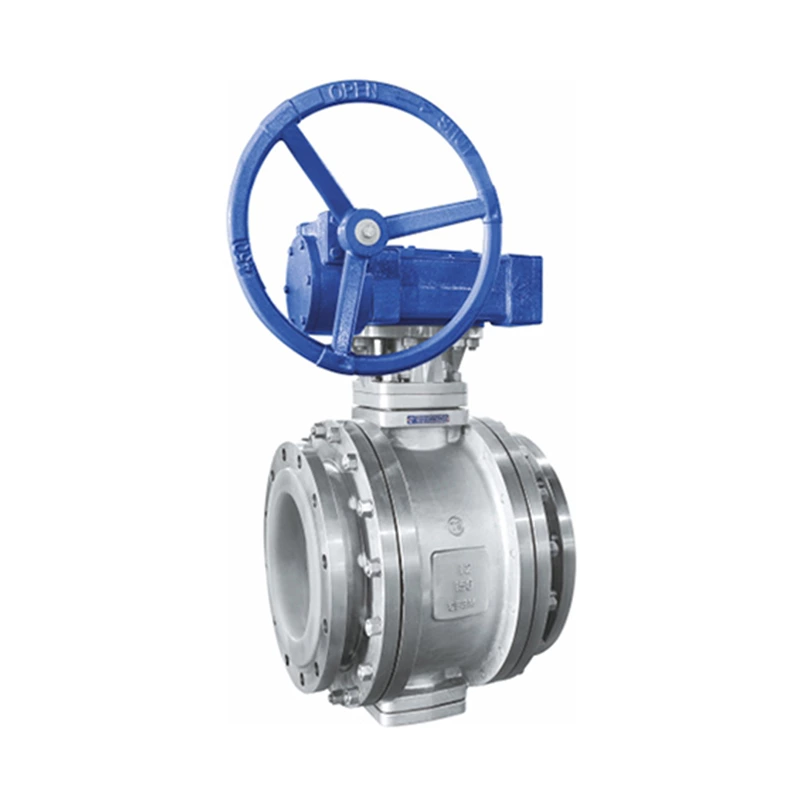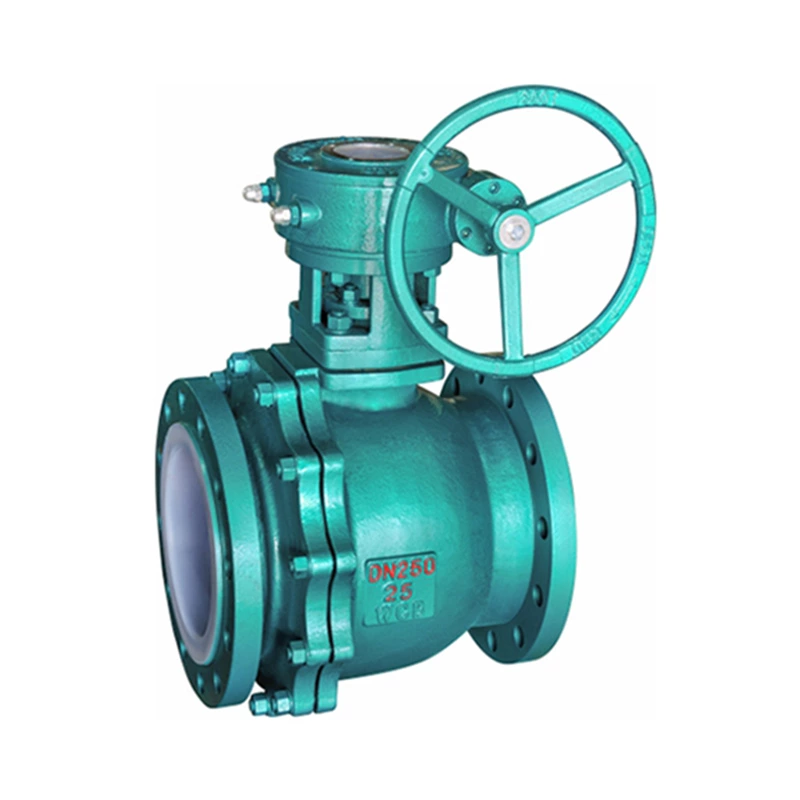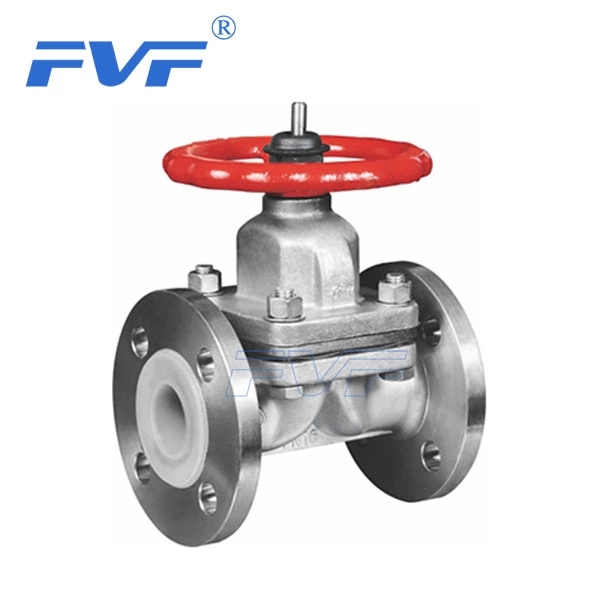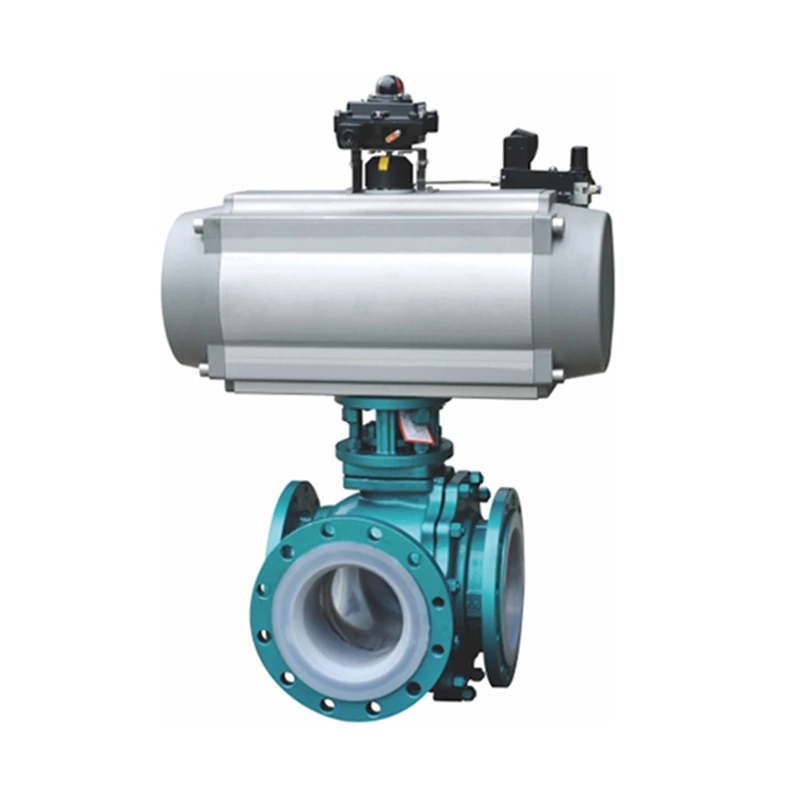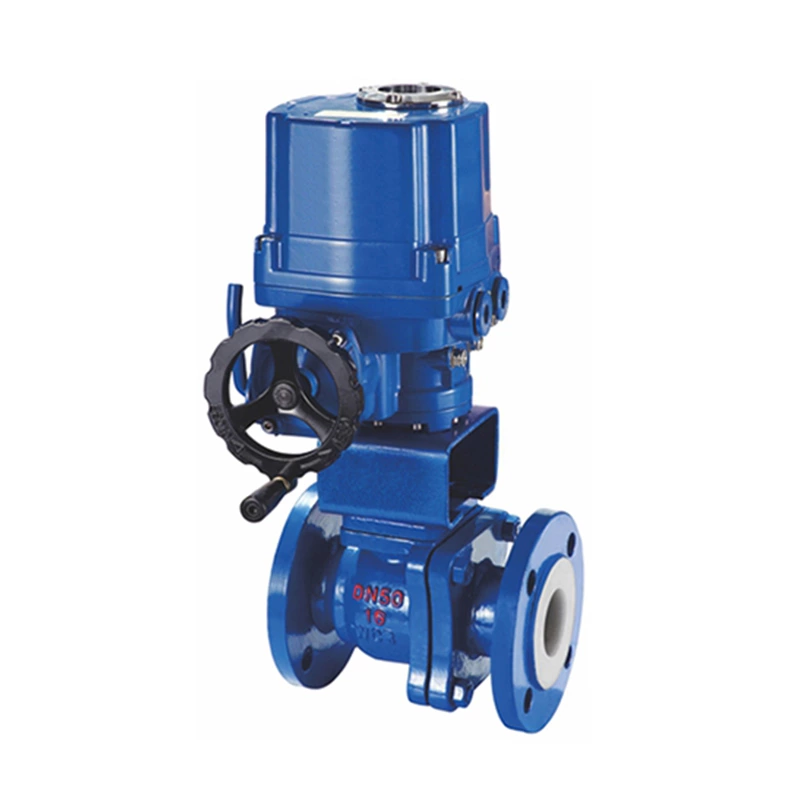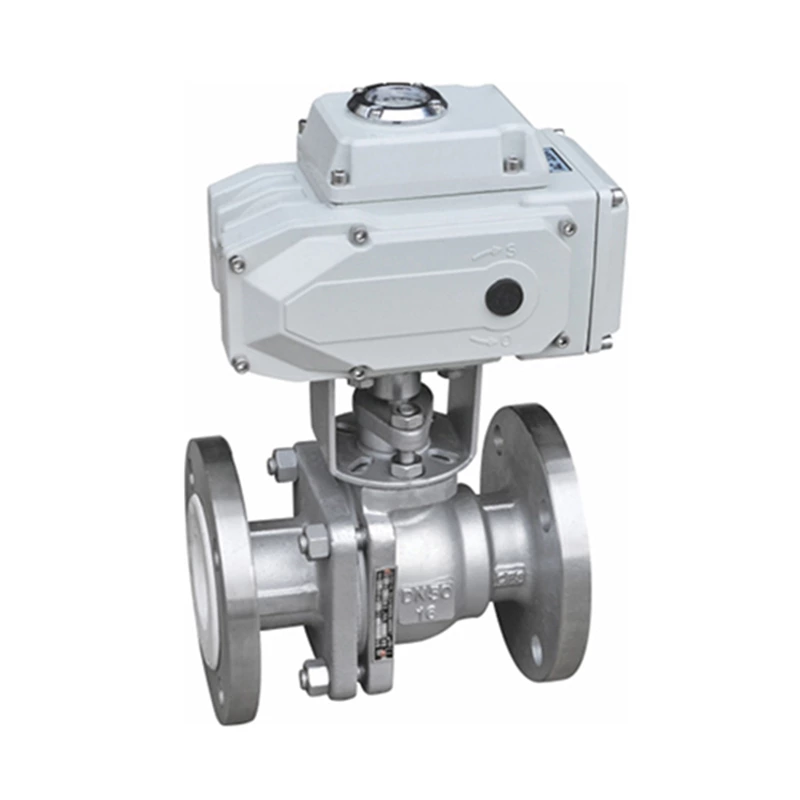Valve Knowledge-ball Valve
Lined Ball Valve is a valve that uses a ball with a circular channel as the opening and closing part, and the ball rotates with the valve stem to achieve the opening and closing action. The opening and closing part of the ball valve is a sphere with a hole, which rotates around the axis perpendicular to the channel to achieve the purpose of opening and closing the channel. The ball valve is mainly used to open and close the pipeline and equipment medium.
It is generally believed that the ball valve is most suitable for direct opening and closing, but recent developments have designed the ball valve to have the function of throttling and flow control. The main features of the ball valve are its compact structure, easy operation and maintenance, suitable for general working media such as water, solvents, acids and natural gas, and also suitable for media with harsh working conditions, such as oxygen, hydrogen peroxide, methane and ethylene. The ball valve body can be integral or combined.
Working principle of ball valve
The ball valve evolved from the plug valve. The ball valve has the same 90-degree rotation action, but the difference is that the plug body is a sphere with a circular through hole or channel passing through its axis. Ball valves are mainly used in pipelines to cut off, distribute and change the flow direction of the medium. They can be closed tightly by rotating 90 degrees and with very small torque. Ball valves are most suitable for use as switches and cut-off valves, but recent developments have designed ball valves to have the function of throttling and controlling flow, such as V-type ball valves.
The main features of ball valves are compact structure, reliable sealing, simple structure, convenient maintenance, the sealing surface and the spherical surface are often in a closed state, not easily eroded by the medium, easy to operate and maintain, suitable for general working media such as water, solvents, acids and natural gas, and also suitable for media with harsh working conditions, such as oxygen, hydrogen peroxide, methane and ethylene, etc., and widely used in various industries. The valve body of ball valves can be integral or combined.
Main features of ball valves:
1. Ball valves are not restricted by the installation direction, and the flow direction of the medium can be arbitrary. The fluid resistance is small, and the full-diameter ball valve has basically no flow resistance.
2. The ball valve has a simple structure, relatively small size, light weight, and is easy to maintain.
3. Tight and reliable. It has two sealing surfaces, and the sealing surface materials of ball valves are currently widely used in various plastics, with good sealing performance and can achieve complete sealing. It has also been widely used in vacuum systems.
4. The ball valve is suitable for frequent operation, quick opening and closing, and light. It is easy to operate and open and close quickly. It only needs to rotate 90° from full open to full closed, which is convenient for long-distance control.
5. Convenient maintenance, the ball valve has a simple structure, and the sealing ring is generally movable, which is convenient for disassembly and replacement.
6. The ball valve has good sealing performance. When fully open or fully closed, the sealing surface of the ball and the valve seat is isolated from the medium, and when the medium passes, it will not cause erosion of the valve sealing surface.
7. It has a wide range of applications, with diameters ranging from a few millimeters to several meters, and can be used from high vacuum to high pressure.
8. Since the ball valve has wiping properties during the opening and closing process, it can be used in media with suspended solid particles.
9. The ball valve has low fluid resistance.
10. The ball valve has no vibration and low noise.
Classification of ball valves:
Ball valves can be divided into floating ball valves, fixed ball valves, elastic ball valves and oil-sealed ball valves according to their structural forms; they can be divided into direct energy ball valves, angle ball valves and three-way ball valves according to the channels, and the three-way ball valves can be divided into T-shaped and L-shaped ones. According to the connection square, they can be divided into threaded connection ball valves, flange connection ball valves and welded ball valves.
1. Floating ball valve
The ball of the ball valve is floating. Under the pressure of the medium, the ball can produce a certain displacement and press tightly on the sealing surface of the outlet end to ensure the sealing of the outlet end.
The floating ball valve has a simple structure and good sealing performance, but the load of the working medium on the ball is all transmitted to the outlet sealing ring. Therefore, it is necessary to consider whether the sealing ring material can withstand the working load of the ball medium. When subjected to high pressure shock, the ball may deviate. This structure is generally used for medium and low pressure ball valves.
2. Fixed ball valve
The ball of the ball valve is fixed and does not move after being pressurized. Fixed ball valves are all equipped with floating valve seats. When subjected to medium pressure, the valve seats move, causing the sealing ring to be pressed tightly against the ball to ensure sealing. Bearings are usually installed on the upper and lower shafts of the ball, with small operating torque, suitable for high-pressure and large-diameter valves.
In order to reduce the operating torque of the ball valve and increase the reliability of the seal, oil-sealed ball valves have appeared in recent years. Special lubricating oil is injected between the sealing surfaces to form an oil film, which enhances the sealing performance and reduces the operating torque. It is more suitable for high-pressure and large-diameter ball valves.
3. Elastic ball valve (i.e. track ball valve)
The ball of the ball valve is elastic. Both the ball and the valve seat sealing ring are made of metal materials. The sealing pressure ratio is very large. The pressure of the medium itself cannot meet the sealing requirements, and external force must be applied. This valve is suitable for high-temperature and high-pressure media.
The elastic ball is elastic by opening an elastic groove at the lower end of the inner wall of the ball. When closing the channel, the wedge-shaped head of the valve stem is used to expand the ball and press it against the valve seat to achieve sealing. Before turning the ball, loosen the wedge head first, and the ball will return to its original shape, so that there will be a small gap between the ball and the valve seat, which can reduce the friction and operating torque of the sealing surface.
4. V-type ball valve
This ball valve belongs to a fixed ball valve and a single-seat sealed ball valve. Its adjustment performance is the best among ball valves, and its flow characteristics are equal percentages, with an adjustable ratio of 100:1. Its V-shaped cutout has a shearing effect on the metal valve seat, which is particularly suitable for media containing fibers, tiny solid particles, slurry, etc.
5. Three-way ball valve
Three-way ball valves are available in T-type and L-type. The T-type can interconnect three orthogonal pipes and cut off the third channel, playing a role in diversion and confluence. The L-type can only connect two orthogonal pipes, and cannot simultaneously keep the third pipe connected to each other, and only plays a distribution role.
Precautions for ball valve installation and maintenance:
1. The ball valve must leave a position for the valve handle to rotate
2. The ball valve cannot be used for throttling.
3. Ball valves with transmission mechanisms should be installed upright.
Product Features
1. The three-way ball valve adopts an integrated structure, a sealing type of four-sided valve seat, fewer flange connections, high reliability, and a lightweight design
2. The three-way ball core is divided into T-type and L-type, with long service life, large flow capacity and low resistance
3. Ball valves are divided into single-acting and double-acting types according to the action type. The characteristic of the single-acting type is that once the power source fails, the ball valve will be in the state required by the control system.
Temperature and pressure limits
The nameplate shows the maximum operating pressure allowed by the ball valve at the maximum and minimum operating temperatures.
The nominal pressure rating (PN) of the ball valve indicates the maximum working pressure of the valve under normal temperature conditions
Installation of ball valves
1) Remove the protective covers on both sides of the flange end and rinse and clean the valve when it is fully open.
2) Before installation, the whole machine should be tested according to the specified signal (electric or gas) (to prevent vibration caused by transportation from affecting performance), and it can be installed online only after passing the test (wiring should be based on the circuit diagram of the electric actuator). 3) Before connecting to the pipeline, the remaining impurities in the pipeline must be flushed and cleaned (these substances may damage the valve seat and ball). 4) During installation, please do not use the actuator part of the valve as a lifting point to avoid damage to the actuator and accessories. 5) This type of valve should be installed in the horizontal or vertical direction of the pipeline. 6) The pipeline near the installation point should not be drooping or subjected to external forces. Pipe brackets or supports can be used to eliminate pipeline deviation. 7) After connecting to the pipeline, please cross-tighten the flange connection bolts with the specified torque. Operation and use 1) Before operation, make sure that the pipeline and valve have been flushed. 2) The operation of the ball valve is completed by rotating the valve stem according to the input signal of the actuator: when it rotates 1/4 turn (900) in the forward direction, the valve is closed. When the valve is rotated 1/4 turn (900) in the reverse direction, it opens.
3) When the direction indicator arrow of the actuator is parallel to the pipeline, the valve is open; when the indicator arrow is perpendicular to the pipeline, the valve is closed.
Ball valve maintenance
Having a long service life and maintenance-free period depends on the following factors: normal working conditions, maintaining a harmonious temperature/pressure ratio, and reasonable corrosion data
Note:
●When the ball valve is closed, there is still pressurized fluid inside the valve body
●Before maintenance, release the pipeline pressure and put the valve in the open position
●Before maintenance, disconnect the power supply or gas source
●Before maintenance, separate the actuator from the bracket
●It is necessary to first check that the upstream and downstream pipelines of the ball valve have been relieved of pressure before disassembly and disassembly operations can be performed
●When disassembling and reassembling, care must be taken to prevent damage to the sealing surface of the parts, especially non-metallic parts. Special tools should be used when removing O-rings
●When assembling, the bolts on the flange must be tightened symmetrically, step by step, and evenly
●The cleaning agent should be compatible with the rubber parts, plastic parts, metal parts and working media (such as gas) in the ball valve. When the working medium is gas, gasoline (GB484-89) can be used to clean metal parts. Non-metallic parts are cleaned with pure water or alcohol
●The individual parts that have been disassembled can be cleaned by immersion. Metal parts with undecomposed non-metal parts can be scrubbed with a clean, fine silk cloth soaked in detergent (to prevent fibers from falling off and adhering to parts). When cleaning, all grease, dirt, glue accumulation, dust, etc. adhering to the wall surface must be removed.
● Non-metal parts should be taken out of the detergent immediately after cleaning and should not be soaked for a long time.
● After cleaning, the wall cleaning agent should be evaporated (it can be wiped with a silk cloth not soaked in detergent) before assembly, but it should not be left for a long time, otherwise it will rust and be contaminated by dust.
● New parts should also be cleaned before assembly.
● Use grease for lubrication. The grease should be compatible with the metal material, rubber parts, plastic parts and working medium of the ball valve. When the working medium is gas, grease such as Special 221 can be used. Apply a thin layer of grease on the surface of the seal installation groove, a thin layer of grease on the rubber seal, and a thin layer of grease on the sealing surface and friction surface of the valve stem.
●During assembly, metal debris, fiber, grease (except for specified use), dust and other impurities, foreign matter, etc. should not be allowed to contaminate, adhere or remain on the surface of the parts or enter the inner cavity.
1) The packing must be re-tightened
If there is a slight leak at the packing, the valve stem nut must be re-tightened.
Note: Do not tighten too tightly, usually tighten 1/4 turn to 1 turn, and the leakage will stop.
2) Replace the valve seat and seal
A) Disassembly
Put the valve in a half-open position, flush and remove possible hazardous substances inside and outside the valve body.
Close the ball valve, remove the connecting bolts and nuts on the flanges on both sides, and then completely remove the valve from the pipeline.
Disassemble the drive device-actuator, connecting bracket, anti-loosening washer, valve stem nut, butterfly spring, glam, wear-resistant sheet, valve stem packing in sequence.
Remove the body cover connecting bolts and nuts, separate the valve cover from the valve body, and remove the valve cover gasket.
Confirm that the valve ball is in the "off" position, which can be easily removed from the valve body, and then remove the valve seat.
Push the valve stem downward from the center hole of the valve body until it is completely removed, and then remove the O-ring and the packing under the valve stem.
Note: Please operate with caution to avoid scratching the valve stem surface and the sealing part of the valve body stuffing box.
B) Reassembly
Clean and inspect the removed parts. It is strongly recommended to replace the valve seat and valve cover gasket and other seals with spare parts package.
Assemble in the reverse order of disassembly.
Cross-tighten the flange connection bolts with the specified torque.
Tighten the valve stem nut with the specified torque.
After installing the actuator, input the corresponding signal to rotate the valve core by rotating the valve stem to make the valve open and closed.
If possible, please perform pressure sealing test and performance test on the valve according to relevant standards before reinstalling the pipeline.
